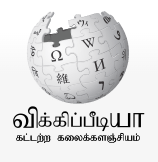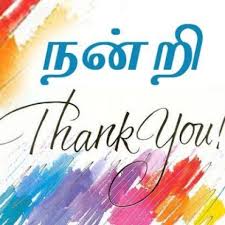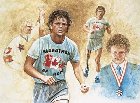கிழக்கு பாகிஸ்தான் மற்றும் வடகிழக்கு ஸ்ரீலங்கா : இரண்டு தலையீடுகளின் ஒரு கதை
 1987ல் ஏற்படுத்தப்பட்டதும், ராஜீவ் - ஜெயவர்த்தனா ஒப்பந்தம் என அழைக்கப்படுவதுமான இந்திய - ஸ்ரீலங்கா உடன்படிக்கை ஜூலை 29 ந்திகதியுடன் 25வருடங்களை நிறைவு செய்கிறது. ஸ்ரீலங்கா (1987 – 90) மற்றும் 1971ல் பங்களாதேஷை உருவாக்கிய கிழக்குப் பாகிஸ்தான் ஆகிய இந்தியாவின் இரண்டு இராணுவத் தலையீடுகளிலும் ஆர்வத்துடன் பங்கேற்ற ஒரு இராணுவ வீரன் என்கிற வகையில் இந்த இரண்டு முயற்சிகளிலும் இந்தியாவின் அதிகார சக்தியின் வலியுறுத்தலை ஒப்பீடு செய்ய முடியாதவனாக உள்ளேன். இரண்டு அரங்குகளிலும் மற்றும் அந்த நேரத்தில் அந்த இரண்டு நடவடிக்கைகளின் போதுள்ள இந்தியாவின் நிலைப்பாட்டிலும் முற்றான வேறுபாடு இருந்தது. பங்களாதேஷை பொறுத்தமட்டில் நன்கு பயிற்றப்பட்ட இராணுவமான பாகிஸ்தானுடன் நடத்தும் மரபுவழி யுத்தமாக இருந்தது. அதில் இறங்குவதற்கு முன்னர் பலத்த இராணுவ திட்டங்களையும் மற்றும் தயாரிப்புகளையும் இந்தியா மேற்கொண்டிருந்தது. அதற்கு முரண்பாடாக ஸ்ரீலங்காவில் இராணுவம் ஆயத்தமில்லாத நிலையில் இருந்தபடியால் தமிழ் கிளர்ச்சியாளர்களுடன் எதிர்க்கிளர்ச்சித் தாக்குதலில் சிக்கிக்கொள்ள நேர்ந்தது. பங்களாதேஷில் படைகளின் நிலை மிகவும் உயர் மட்டத்தில் இருந்தது. விமானப்படைகளும் மற்றும் கடற்படையினரும் ஒட்டுமொத்த தாக்குதல் திட்டத்திலும் ஒரு பகுதியாகச் செயற்பட்டன. ஸ்ரீலங்காவில் முக்கியமாக அது தமிழீழ விடுதலைப் புலிகளுக்கு எதிரான பரவலாக்கப்பட்ட ஒரு காலாட்படை நடவடிக்கையாக இருந்தது.
1987ல் ஏற்படுத்தப்பட்டதும், ராஜீவ் - ஜெயவர்த்தனா ஒப்பந்தம் என அழைக்கப்படுவதுமான இந்திய - ஸ்ரீலங்கா உடன்படிக்கை ஜூலை 29 ந்திகதியுடன் 25வருடங்களை நிறைவு செய்கிறது. ஸ்ரீலங்கா (1987 – 90) மற்றும் 1971ல் பங்களாதேஷை உருவாக்கிய கிழக்குப் பாகிஸ்தான் ஆகிய இந்தியாவின் இரண்டு இராணுவத் தலையீடுகளிலும் ஆர்வத்துடன் பங்கேற்ற ஒரு இராணுவ வீரன் என்கிற வகையில் இந்த இரண்டு முயற்சிகளிலும் இந்தியாவின் அதிகார சக்தியின் வலியுறுத்தலை ஒப்பீடு செய்ய முடியாதவனாக உள்ளேன். இரண்டு அரங்குகளிலும் மற்றும் அந்த நேரத்தில் அந்த இரண்டு நடவடிக்கைகளின் போதுள்ள இந்தியாவின் நிலைப்பாட்டிலும் முற்றான வேறுபாடு இருந்தது. பங்களாதேஷை பொறுத்தமட்டில் நன்கு பயிற்றப்பட்ட இராணுவமான பாகிஸ்தானுடன் நடத்தும் மரபுவழி யுத்தமாக இருந்தது. அதில் இறங்குவதற்கு முன்னர் பலத்த இராணுவ திட்டங்களையும் மற்றும் தயாரிப்புகளையும் இந்தியா மேற்கொண்டிருந்தது. அதற்கு முரண்பாடாக ஸ்ரீலங்காவில் இராணுவம் ஆயத்தமில்லாத நிலையில் இருந்தபடியால் தமிழ் கிளர்ச்சியாளர்களுடன் எதிர்க்கிளர்ச்சித் தாக்குதலில் சிக்கிக்கொள்ள நேர்ந்தது. பங்களாதேஷில் படைகளின் நிலை மிகவும் உயர் மட்டத்தில் இருந்தது. விமானப்படைகளும் மற்றும் கடற்படையினரும் ஒட்டுமொத்த தாக்குதல் திட்டத்திலும் ஒரு பகுதியாகச் செயற்பட்டன. ஸ்ரீலங்காவில் முக்கியமாக அது தமிழீழ விடுதலைப் புலிகளுக்கு எதிரான பரவலாக்கப்பட்ட ஒரு காலாட்படை நடவடிக்கையாக இருந்தது.

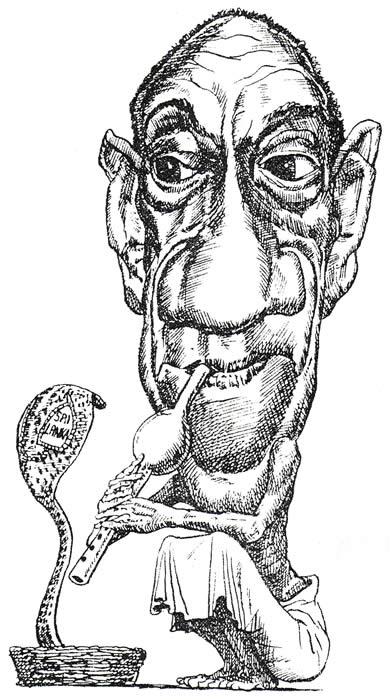 [ July 24, 2012 ] Many things are said about Black July, 1983. That there were many culprits who caused the havoc that virtually destroyed the image of Sri Lanka and which gave justification for a prolonged period of violence. However, there was one man who was the creator of this havoc. It was then-President of the country, Junius Richard Jayawardene. His work of destroying the fabric of Sri Lankan democracy started from the very first day after he won the election as the leader of the United National Party, in 1977. His very first act as the Prime Minister elect was to grant a “holiday to the police”. That holiday lasted for two or three weeks. That was the first act done to intimidate his political opponents. With an ambition to hold onto power and not to give up what he had won, he knew one of his major strategies needed to be to launch a period of violence in order not to allow space for internal challenges from disaffected democratic forces. That process went on through various kinds of initiatives, which are well-recorded. The 1982 referendum was a major assault he made on the electoral politics in Sri Lanka. He was seriously pursuing his ambition to “close the electoral map” of Sri Lanka for some time.
[ July 24, 2012 ] Many things are said about Black July, 1983. That there were many culprits who caused the havoc that virtually destroyed the image of Sri Lanka and which gave justification for a prolonged period of violence. However, there was one man who was the creator of this havoc. It was then-President of the country, Junius Richard Jayawardene. His work of destroying the fabric of Sri Lankan democracy started from the very first day after he won the election as the leader of the United National Party, in 1977. His very first act as the Prime Minister elect was to grant a “holiday to the police”. That holiday lasted for two or three weeks. That was the first act done to intimidate his political opponents. With an ambition to hold onto power and not to give up what he had won, he knew one of his major strategies needed to be to launch a period of violence in order not to allow space for internal challenges from disaffected democratic forces. That process went on through various kinds of initiatives, which are well-recorded. The 1982 referendum was a major assault he made on the electoral politics in Sri Lanka. He was seriously pursuing his ambition to “close the electoral map” of Sri Lanka for some time.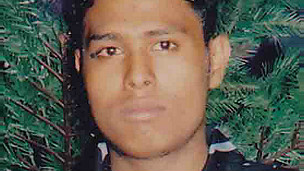 - ஜூலை 24, 2012 - இலங்கை சிறைச்சாலை ஒன்றில் தாக்குதலுக்கு உள்ளாகி, அதனால் மரணடைந்ததாகத் தெரிவிக்கப்படுகின்ற அரசியல் கைதி நிமலரூபனின் உடல் வவுனியாவில் அடக்கம் செய்யப்பட்டுள்ளது. வவுனியாச் சிறைச்சாலையில் சில கண்காணிபாளர்களை கைதிகள் தாக்கினார்கள் என்று எழுந்த குற்றச்சாட்டை அடுத்து பலர் மகர சிறைச்சாலைக்கு மாற்றப்பட்டனர். அங்கு இவர்கள் தாக்குதலுக்கு உள்ளானதாகவும், சிகிச்சைக்காக ராகம வைத்தியசாலைக்கு கொண்டு செல்லப்பட்ட போது, நிமலரூபன் இறந்த நிலையிலேயே கொண்டுவரப்பட்டார் என்றும் மருத்துவர்கள் தெரிவித்தனர். மரணமடைந்த நிமலரூபன் அடிகாயங்ளினாலும், உரிய சிகிச்சையில்லாமலுமே உயிரிழக்க நேரிட்டதாக தமிழ் அரசியல்வாதிகளும், மனித உரிமைச் செயற்பாட்டாளர்களும் குற்றம் சுமத்தியிருந்தனர். அவரின் மரணம் தொடர்பான விசாரணைகள் நடைபெற்ற போதிலும் மரணத்திற்கான காரணம் இன்னும் வெளியிடப்படவில்லை.
- ஜூலை 24, 2012 - இலங்கை சிறைச்சாலை ஒன்றில் தாக்குதலுக்கு உள்ளாகி, அதனால் மரணடைந்ததாகத் தெரிவிக்கப்படுகின்ற அரசியல் கைதி நிமலரூபனின் உடல் வவுனியாவில் அடக்கம் செய்யப்பட்டுள்ளது. வவுனியாச் சிறைச்சாலையில் சில கண்காணிபாளர்களை கைதிகள் தாக்கினார்கள் என்று எழுந்த குற்றச்சாட்டை அடுத்து பலர் மகர சிறைச்சாலைக்கு மாற்றப்பட்டனர். அங்கு இவர்கள் தாக்குதலுக்கு உள்ளானதாகவும், சிகிச்சைக்காக ராகம வைத்தியசாலைக்கு கொண்டு செல்லப்பட்ட போது, நிமலரூபன் இறந்த நிலையிலேயே கொண்டுவரப்பட்டார் என்றும் மருத்துவர்கள் தெரிவித்தனர். மரணமடைந்த நிமலரூபன் அடிகாயங்ளினாலும், உரிய சிகிச்சையில்லாமலுமே உயிரிழக்க நேரிட்டதாக தமிழ் அரசியல்வாதிகளும், மனித உரிமைச் செயற்பாட்டாளர்களும் குற்றம் சுமத்தியிருந்தனர். அவரின் மரணம் தொடர்பான விசாரணைகள் நடைபெற்ற போதிலும் மரணத்திற்கான காரணம் இன்னும் வெளியிடப்படவில்லை.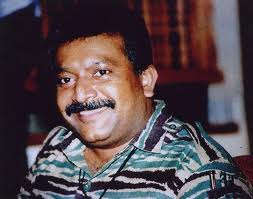
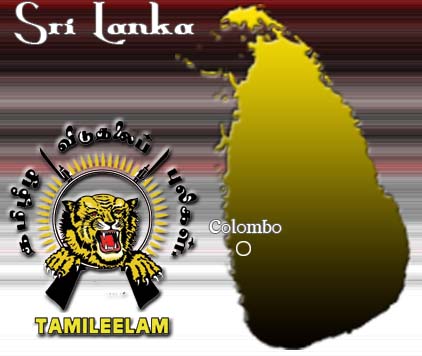 'It is now crystal clear that the Sinhala leaders will never put forward a just resolution to the Tamil national question. Therefore, we are not prepared to place our trust in the impossible and walk along the same old futile path…. We therefore ask the international community and the countries of the world that respect justice to recognize our freedom struggle.” This is the key sections of the annual Heroes’ Day statement delivered by the slain leader of the disabled Liberation Tigers of Tamil Eelam (LTTE), V. Pirapaharan. Serious Sri Lanka watchers would agree that such a statement represents not only the Tamil disappointments and distrust, but also it effectively exposes the duplicity of five decades old southern Sinhalese politics, which categorically refused to do meaningful political business with the Tamil leaders who represent the North and East Tamils. Moderates The Tamil Tigers, who mirrored the Sinhala political establishment in its dealing with dissent and pluralism, unquestionably are the deadly elements of the Sri Lanka society. Whether the Tamil Tigers, for that matter, violent Tamil nationalists are freedom fighters as they claim themselves or deadly terrorists as the Sri Lanka governments describe, history will answer it. My point here is that the birth of Tamil Tiger movement had roots in Sri Lanka’s history and its anti-Tamil agendas. It is important to point that there was not an overnight decision among the ordinary Tamils to approve the agendas of the Tamil Tigers: the failure of Sri Lankan polity to meet the demands of the Tamil moderates was a key foundation for the origin of the Tamil extremism in Sri Lanka. Instead of listening to the Tamil leaders and accommodating their reasonable demands, the Sinhalese ruling leaders of the time assaulted and stoned the Tamils and their leaders, and even hired the Sinhalese to become butchers to kill innocent Tamils and moderate leaders. One needs to realize that successive governments since 1956 controlled by the Sinhalese miserably failed to engage the Tamil moderates such as the Federal Party (FP).
'It is now crystal clear that the Sinhala leaders will never put forward a just resolution to the Tamil national question. Therefore, we are not prepared to place our trust in the impossible and walk along the same old futile path…. We therefore ask the international community and the countries of the world that respect justice to recognize our freedom struggle.” This is the key sections of the annual Heroes’ Day statement delivered by the slain leader of the disabled Liberation Tigers of Tamil Eelam (LTTE), V. Pirapaharan. Serious Sri Lanka watchers would agree that such a statement represents not only the Tamil disappointments and distrust, but also it effectively exposes the duplicity of five decades old southern Sinhalese politics, which categorically refused to do meaningful political business with the Tamil leaders who represent the North and East Tamils. Moderates The Tamil Tigers, who mirrored the Sinhala political establishment in its dealing with dissent and pluralism, unquestionably are the deadly elements of the Sri Lanka society. Whether the Tamil Tigers, for that matter, violent Tamil nationalists are freedom fighters as they claim themselves or deadly terrorists as the Sri Lanka governments describe, history will answer it. My point here is that the birth of Tamil Tiger movement had roots in Sri Lanka’s history and its anti-Tamil agendas. It is important to point that there was not an overnight decision among the ordinary Tamils to approve the agendas of the Tamil Tigers: the failure of Sri Lankan polity to meet the demands of the Tamil moderates was a key foundation for the origin of the Tamil extremism in Sri Lanka. Instead of listening to the Tamil leaders and accommodating their reasonable demands, the Sinhalese ruling leaders of the time assaulted and stoned the Tamils and their leaders, and even hired the Sinhalese to become butchers to kill innocent Tamils and moderate leaders. One needs to realize that successive governments since 1956 controlled by the Sinhalese miserably failed to engage the Tamil moderates such as the Federal Party (FP).

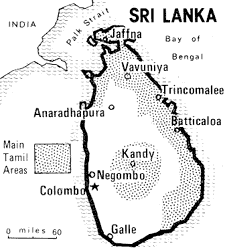 Sri Lanka's pogrom
Sri Lanka's pogrom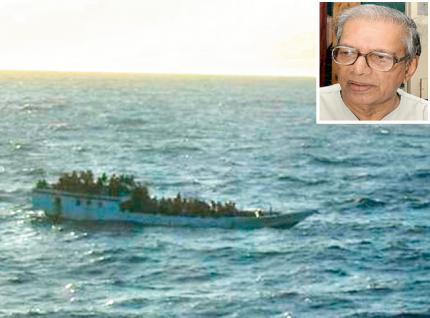 Jul 10, 2012 - Over 600 Sri Lankan Tamils have perished in the Indian Ocean sailing from the south Indian coast in sea-unworthy boats for greener pastures in Australia and Canada, says S.C. Chandrahasan, who heads the OfERR (Organisation for Ealam Refugees Rehabilitation), quoting from reliable statistics. He must know since he has been efficiently running OfERR to take care of the thousands of the Tamil refugees who fled from the war zone in north Lanka since early 80s. “Families of these missing people have approached us pleading for help to locate them. The situation is tragic and hopeless. It is also hugely embarrassing because these boat people have been tutored by their unscrupulous agents to tell the Australian authorities that they were being treated very badly in the Indian refugees camps and so they had to flee to seek asylum, whereas the truth is that the Indian and Tamil Nadu governments have done a lot for us”, says Chandrahasan, whose father was the iconic Tamil leader in Sri Lanka known as Eezha Thanthai Chelva. “And a recent boat seizure found some Afghans too among the Sri Lankan Tamils”, he adds.
Jul 10, 2012 - Over 600 Sri Lankan Tamils have perished in the Indian Ocean sailing from the south Indian coast in sea-unworthy boats for greener pastures in Australia and Canada, says S.C. Chandrahasan, who heads the OfERR (Organisation for Ealam Refugees Rehabilitation), quoting from reliable statistics. He must know since he has been efficiently running OfERR to take care of the thousands of the Tamil refugees who fled from the war zone in north Lanka since early 80s. “Families of these missing people have approached us pleading for help to locate them. The situation is tragic and hopeless. It is also hugely embarrassing because these boat people have been tutored by their unscrupulous agents to tell the Australian authorities that they were being treated very badly in the Indian refugees camps and so they had to flee to seek asylum, whereas the truth is that the Indian and Tamil Nadu governments have done a lot for us”, says Chandrahasan, whose father was the iconic Tamil leader in Sri Lanka known as Eezha Thanthai Chelva. “And a recent boat seizure found some Afghans too among the Sri Lankan Tamils”, he adds.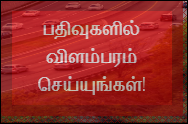
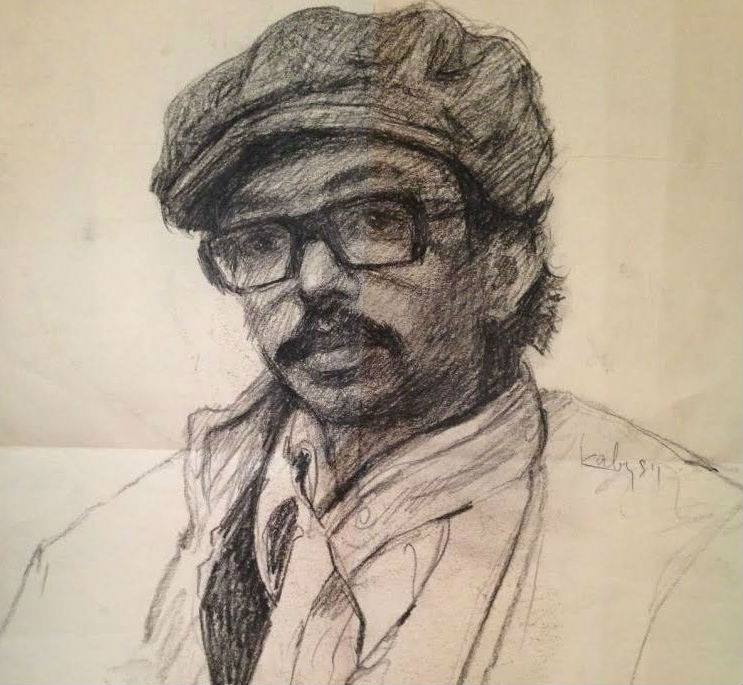
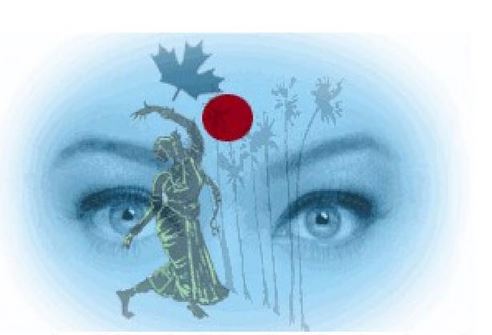 பதிவுகள். காம் மின்னூல் தொகுப்புகள்
பதிவுகள். காம் மின்னூல் தொகுப்புகள் 

